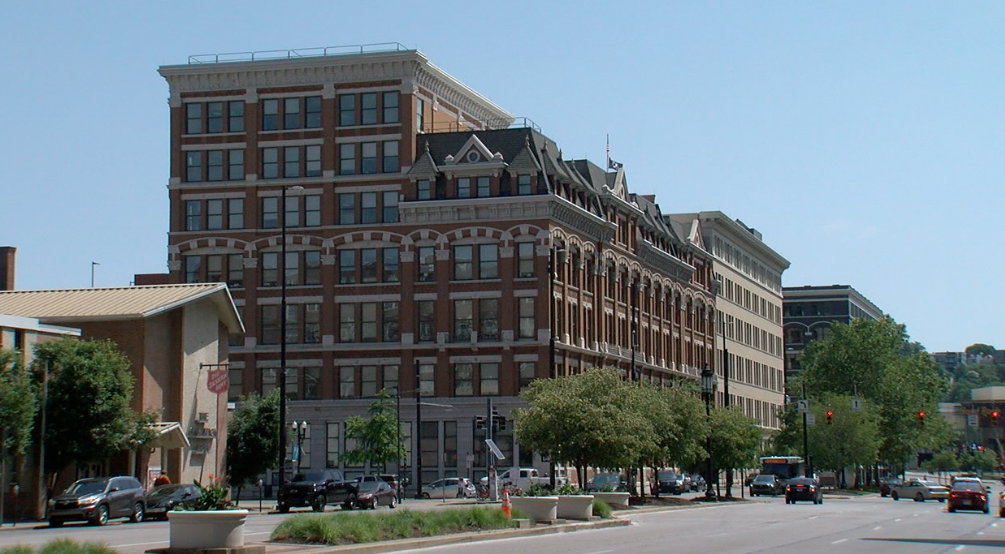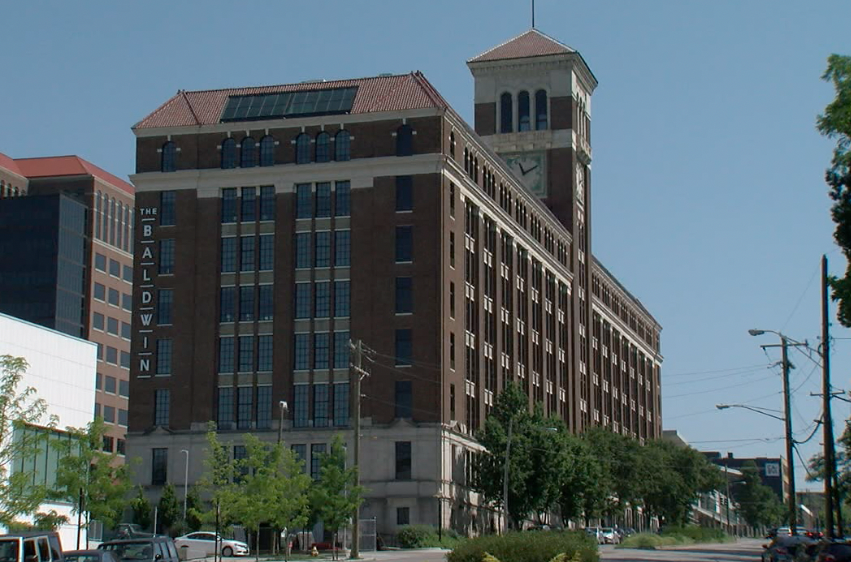CINCINNATI — Hamilton County Commissioners may move 1,200 workers out of downtown Cincinnati and into new leased office space up to seven miles away as soon as January 1.
The move could be good for county taxpayers as commissioners look to consolidate office space and potentially sell old buildings in the Central Business District and Over-the-Rhine. But it could hurt restaurant owners, who are struggling post pandemic to regain lunch and Happy Hour business in the face of a new remote workplace.
“It could be devastating,” said Tom Sparling, general manager of the Holy Grail Tavern and Grille at The Banks. “Our traffic was already down … and then you take 1,200 employees out of downtown, not just our business but all the businesses around here are going to be affected.”
Tony Cafoe, owner of Jefferson Social at The Banks, worried that removing so much foot traffic wouldn’t just hurt downtown businesses, but also impact the area’s safety and vibrancy.

“You would lose 1,200 people that would eat, shop, park,” Cafoe said. “If you go into the Central Business District right now at lunchtime or during the day, it’s kind of scary.”
Hamilton County requested proposals on May 17 to lease Class A office space that could accommodate at least 1,200 employees, with at least 1,550 parking spaces on-site. It is seeking 350,000 to 400,000 square feet, within seven miles of downtown and the Hamilton County Courthouse, on a public bus line and within three blocks of a major expressway.
It is widely rumored that county officials favor moving to the Bon Secours Mercy Health headquarter building in Bond Hill which has plenty of empty space. Commercial real estate experts say there are very few locations downtown that meet such specific criteria as is listed in the proposal request.

“The county is not looking to wholly move out of downtown,” said county spokesperson Bridget Doherty, who stressed that no decision has been made on which county departments may move or where.
Proposals were originally due on June 9, but county officials extended the deadline to June 21.
County government includes a wide range of departments such as sheriff, prosecutor, public defender, court staff, auditor and engineer.
The overall county employee headcount is 4,300 to 4,400. But the commissioners have direct oversight of 1,200 workers, the largest being the 750 who work for Hamilton County Job & Family Services out of the Alms and Doepke building. The sprawling historic building on Central Parkway was built in the 1870’s.
The commissioners also oversee workers for the administrative, facilities, planning, environmental services, and parking stadia departments, as well as the 911 center.

“We are exploring opportunities to provide the highest quality services as efficiently as possible to benefit our taxpayers,” said Commissioner Denise Driehaus. “As part of this exercise, we are inventorying our facilities to match our workforce needs. No decisions have been made. I look forward to hearing from the administration after the RFP process concludes.”

Carl Goertemoeller, executive director of the University of Cincinnati Real Estate Center, said the county is trying to rationalize its real estate, which is what many private companies are doing in the post-pandemic workplace.
“This is clearly an attempt to consolidate the multiple office buildings that the county operates currently in downtown,” Goertemoeller said. “If they can relocate and gain efficiency in terms of their operating costs versus their existing buildings, I think that's a positive for all of the taxpayers of Hamilton County.”
Commissioners have long wondered about the future of its older and historic buildings as maintenance costs rise — such as 800 Broadway St., the former Cincinnati Times-Star site, where juvenile and domestic court and probation offices are housed.
In 2014, commissioners considered moving some government offices to Mercy Health’s shuttered Mount Airy Hospital, but ultimately decided against it.
“If they're paying for square footage in any of those buildings that they're not utilizing … that can be re-purposed for another use and can put some money in the county's pocket on top of it,” Goertemoeller said.
While the relocation to new leased space with amenities such as a fitness center and free employee parking may be good for the county, Goertemoeller said it will unquestionably hurt downtown.

“Certainly, it's not positive. If these were prepandemic times, perhaps you could more effectively absorb the loss of that many jobs,” Gertemoeller said. “Given the position that we're in post-pandemic, where the return to office has been slow … this is just going to add to that existing situation.”
There are two sites downtown that real estate experts say could potentially work for the county to lease: the office towers of Atrium One and Atrium Two in the Central Business District and the Baldwin Building near Eden Park.
If the county opts to lease space in the Atrium office towers, both Cafoe and Sparling said it would bring many new customers to their restaurants which are located a few blocks away.

“If the county moved 1,200 people a couple of blocks away that would be incredible for our businesses,” Cafoe said.
Cincinnati Mayor Aftab Pureval is also paying close attention to the county’s relocation plans. While he’s most worried about losing earnings tax if the county moves jobs outside of the city, he’s also concerned about the impact on downtown.
“If the county were to move those employees inside the city elsewhere, obviously that would be concerning because we’re really trying to make sure our downtown is thriving. And moving employees outside of downtown would be challenging, particularly for our local businesses,” Pureval said. “But that would certainly be better than moving them entirely outside of the city.”
The Mercy Health site in Bond Hill is within city limits.

“We are always looking at ways to ensure we are good stewards of our resources while maximizing our ability to improve access to compassionate, high-quality care for our patients,” said Mercy Health spokesperson Lisa Dyson.
In 2015, Mercy Health built its corporate headquarters facility in Bond Hill. It merged with Maryland-based Catholic health system, Bon Secours, in 2018, to become one of the largest Catholic health systems in the US and one of the largest employers in Cincinnati.
Over the years Mercy Health has enjoyed generous incentives from the city and the state to boost job creation. After its merger the company, which already employed 1,200, was looking to add an additional 500 jobs.
The city boosted incentives for Mercy Health for the second time in 2019, tied to job creation, from $19.5 million to about $27 million.
Now with post-pandemic working patterns, about 150 Bon Secours Mercy Health employees work at the headquarters every day, Dyson said.
There's no timeline on when commissioners will decide, but the request for proposals ask for a lease from Jan. 1, 2024 thru March 31, 2035, with options to renew for two five-year terms.
“You could theoretically end up in a location that's a little more centrally located for more of the county residents, which would not be a bad thing,” Goertemoeller said. “The negatives will really be just absorbing the lack of those jobs downtown and the potential impact on the small businesses that rely on that workforce to sustain them.”






